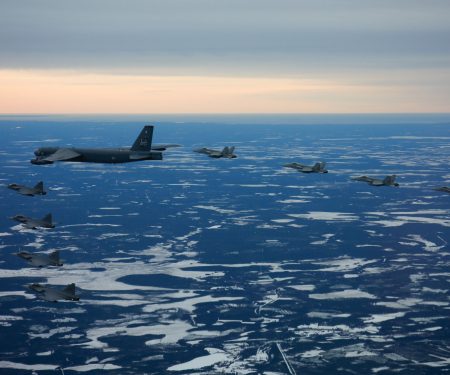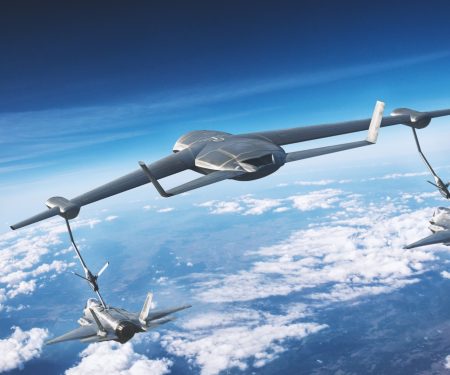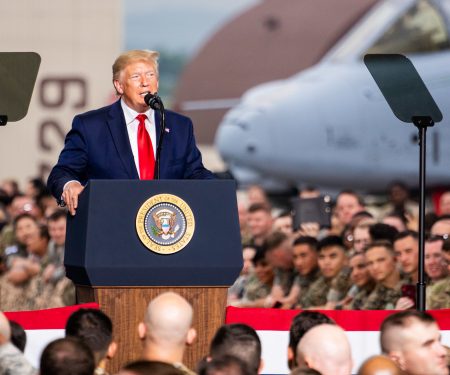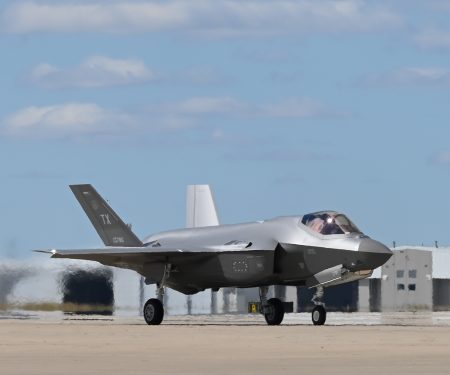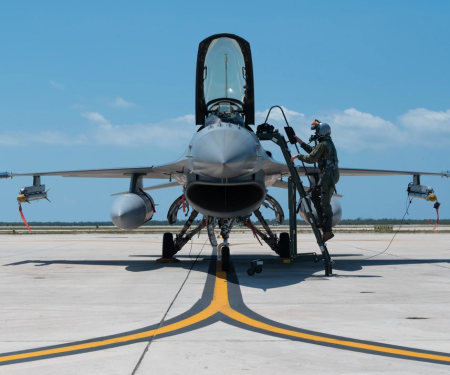Skunk Works Uncrewed NGAS Concept Gets New Attention
What Military Personnel Policies Could Change Under President Trump
Reserve Wing Becomes First in the Air Force to Get Its Own F-35
The F-16 Has No Built-In Ladder, But That Could Change Soon Thanks to One Pilot
Radar Sweep
US Will Send Contractors to Ukraine to Help Fix Its Weapons
The Pentagon said Nov. 8 that it will send “a small number” of U.S. defense contractors to Ukraine, where they will repair advanced American-made weapons, including F-16 fighter jets, Bradley fighting vehicles, and air defense systems, donated by Western allies amid Russia’s invasion.
The Russia-Ukraine War Intensifies, With Drone Attacks, Foreign Troops, and Record Losses
The war between Russia and Ukraine is escalating. The neighbors this weekend launched their largest drone attacks against each other since the start of the war nearly three years ago. Russia last week began a fresh effort to oust Ukrainian forces from its Kursk region after amassing more than 50,000 troops, including some 10,000 soldiers from North Korea. And Russian troops, while advancing steadily in Ukraine’s east, are incurring record numbers of dead and injured, according to the British military’s top commander.
AFRL’s ‘LabVerse’ Looking at AI for System Modernization
An Air Force Research Laboratory initiative that kicked off last year to enhance the department’s digital modernization efforts is bearing fruit for artificial intelligence, according to a senior official. AFRL stood up an environment called the “LabVerse” around the time it created a new Digital Capabilities Directorate in March 2023.
Eyeing Future CCA Missions, Navy Teams with Lockheed, GA to Test New Drone Control System
U.S. Navy pilots sitting comfortably in Maryland recently took a new carrier-based drone control center out for a spin for the first time, piloting a General Atomics MQ-20 Avenger thousands of miles away using autonomous tech made by Lockheed Martin’s secretive Skunk Works division.
Air Force Waits for Tankers in Wake of Boeing Strike
Six weeks into the new fiscal year, Boeing has yet to deliver any of the 15 KC-46 tankers it owes the service by next September. Service officials did not say when they expect the deliveries, which were disrupted by a recently concluded seven-week strike, but said they expect the company to hew to its contract.
How to Keep Up in a Software-Defined World
Pentagon and industry officials agree: how the U.S. military used to develop and buy software will no longer work in the modern, digital age. Learn more about how software modernization can change to adapt to best practices and the needs of the warfighter.
Air Force Grapples with Future of Its San Antonio-Based Cyber War Headquarters
Nine months after the Air Force announced a sweeping reorganization that included plans to raise the stature of its cyber operations mission headquarters in San Antonio, the service still can’t say exactly what that means. The holdup has left the 16th Air Force—the unit responsible for information warfare that’s housed on Joint Base San Antonio-Lackland—wondering about the impacts on its more than 49,000 employees, including 4,850 local workers.
US Olympic Defender Allies Seek ‘Common’ Space Picture
The U.S. and some of its closest allies in Operation Olympic Defender (OOD) this week launched “initial” efforts to create new standards for sharing space monitoring data—the necessary foundation for developing a common view of the space battlefield, according to U.S. Space Command (SPACECOM).
Pentagon Officials Anxious Trump May Fire the Military’s Top General
Defense officials are getting anxious about the possibility of the incoming Trump administration firing Joint Chiefs Chair Gen. C.Q. Brown, due to perceptions that he is out of step with the president-elect on the Pentagon’s diversity and inclusion programs.
China’s Stealth CH-7 Long-Endurance Drone Emerges
The first example of China’s mysterious CH-7 stealthy flying-wing drone seems to have been revealed, although with a somewhat different look compared to previous mockups, and a very impressive size.
Unsupervised: Military Child Care Centers Slow to Report Abuse with Little Oversight
The Military.com investigation into military day care centers revealed that service branch rules generally prioritize protecting the institution, keep parents in the dark while officials formulate a public relations response, and have minimal safeguards to guarantee accountability. Base commanders and military police units often don’t know who is responsible for reporting and investigating allegations of abuse, allowing cases to slow to a crawl while offices shirk responsibility.
The Air Force Once Almost Nuked the Moon
Turn back the page to the Atomic Age. It’s 1958. The United States and the Soviet Union have been busy testing nuclear weapons on Earth, but the launch of the Soviet satellite Sputnik 1 in 1957 has changed the entire Cold War. The Soviets proved they can launch a rocket, and therefore could launch a nuclear warhead, anywhere in the world. The United States, inside both its military and its scientific community, was scrambling for a response.

